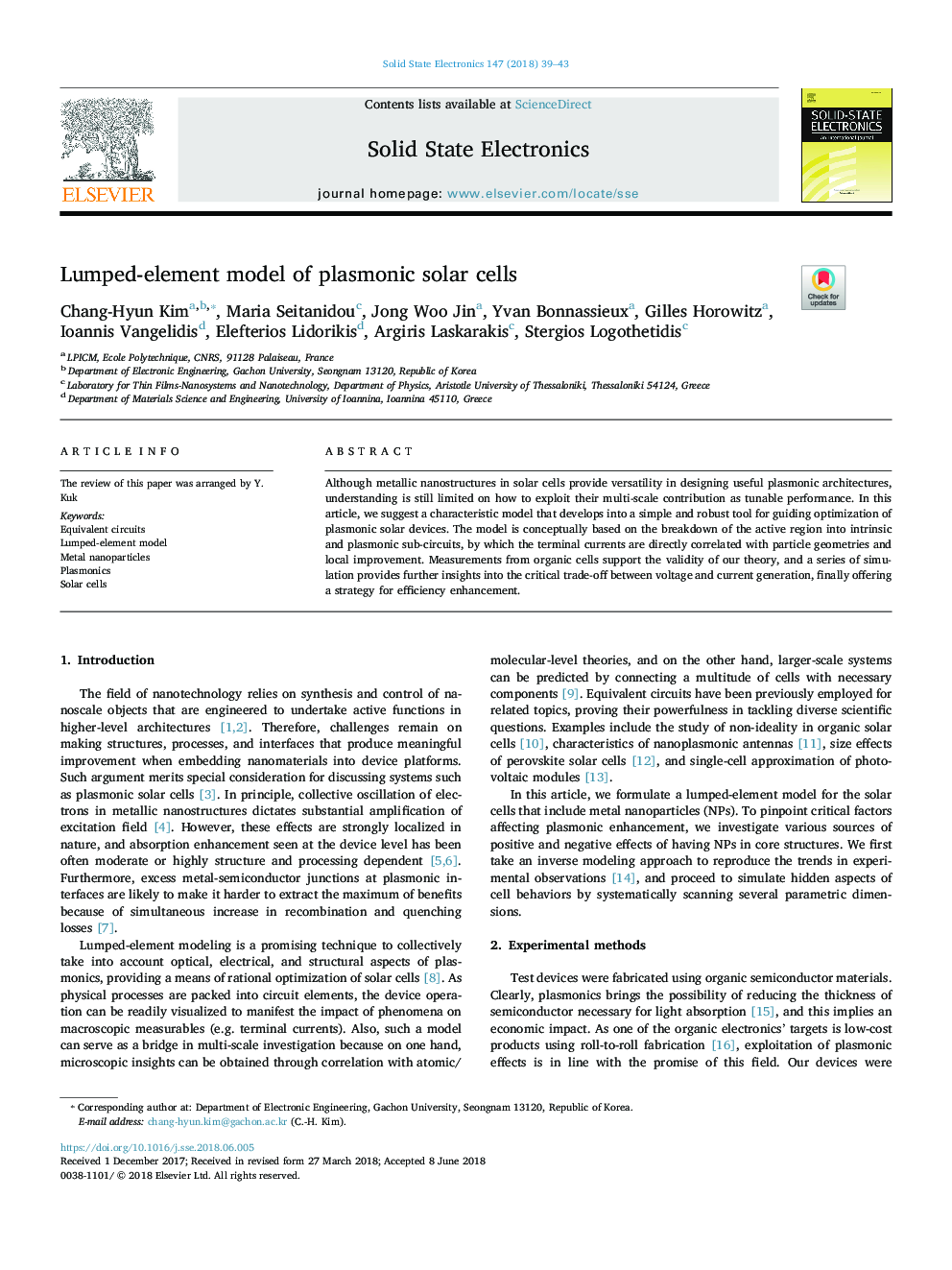| Article ID | Journal | Published Year | Pages | File Type |
|---|---|---|---|---|
| 7150211 | Solid-State Electronics | 2018 | 5 Pages |
Abstract
Although metallic nanostructures in solar cells provide versatility in designing useful plasmonic architectures, understanding is still limited on how to exploit their multi-scale contribution as tunable performance. In this article, we suggest a characteristic model that develops into a simple and robust tool for guiding optimization of plasmonic solar devices. The model is conceptually based on the breakdown of the active region into intrinsic and plasmonic sub-circuits, by which the terminal currents are directly correlated with particle geometries and local improvement. Measurements from organic cells support the validity of our theory, and a series of simulation provides further insights into the critical trade-off between voltage and current generation, finally offering a strategy for efficiency enhancement.
Related Topics
Physical Sciences and Engineering
Engineering
Electrical and Electronic Engineering
Authors
Chang-Hyun Kim, Maria Seitanidou, Jong Woo Jin, Yvan Bonnassieux, Gilles Horowitz, Ioannis Vangelidis, Elefterios Lidorikis, Argiris Laskarakis, Stergios Logothetidis,
